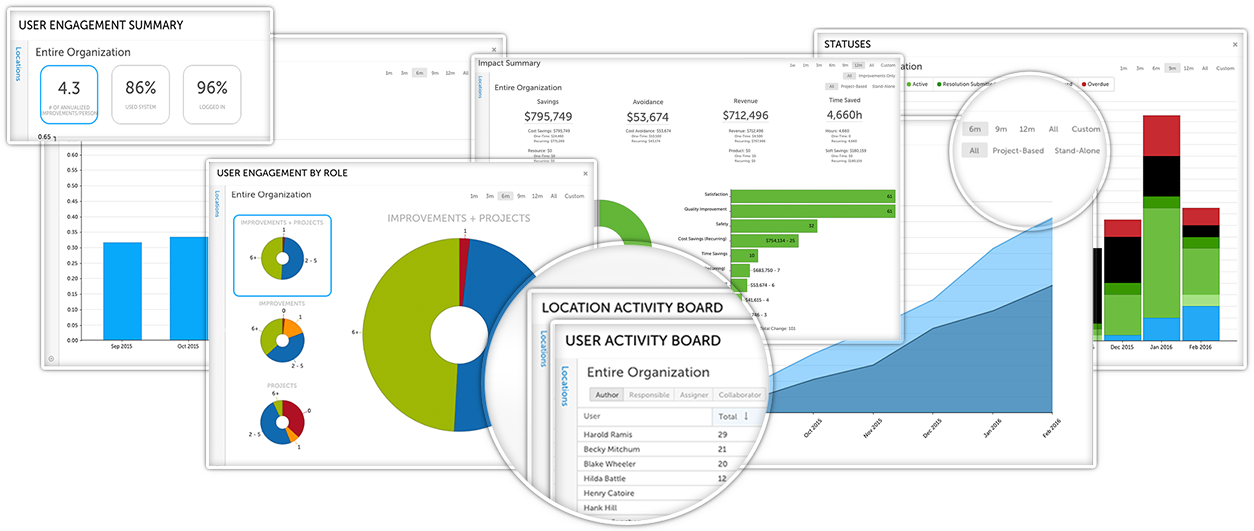
A linchpin is a fastener passed through the end of an axle to keep a wheel in position. The term is also used figuratively, according to Wikipedia, to describe, “something [or someone] that holds the various elements of a complicated structure together.” What an apt description of the role of middle managers in a Lean environment.
When we talk about the Lean business management approach or just continuous improvement in general, we often say that it involves everyone from the CEO to front line workers. In the literature about Lean, a lot of emphasis is put on what top leaders need to do to create a culture of improvement. There’s also much discussion about how to keep operational workers involved and engaged. Both are essential, but it is a huge mistake to underestimate the role of middle management.
The Role of Middle Managers in Lean
There’s not going to be any shocking information in the paragraphs that follow. However, laying out the things leaders ask of middle managers in one spot might help clarify the scope of the task. We also think it helps make the case that supporting them is essential to success.
Strategy Deployment
Hoshin Kanri and other strategy deployment techniques require that the strategic goals are cascaded down through the organization all the way to the front line so that everyone has individual objectives that are aligned to the overall strategy. That line, so to speak, runs directly through middle managers who are responsible for making the objectives meaningful for their team. At the same time, they must be able to communicate the results in a way that is in line with what is expected by executive leaders. If middle managers do not fully understand the goals of the executive team and know how they are expected to contribute, success is unlikely.
Lean Modeling and Support
The executive team may be great about emphasizing the importance of Lean within the organization, but people tend to model what they see. If operational workers present opportunities for improvement to their manager, only to have them ignored or brushed aside, they will learn to ignore waste as well. If, on the other hand, managers consistently deploy Lean tools like PDSA and the 5 whys, workers will get more comfortable working those techniques as well. Only the manager is in the position to define what “normal” looks like in their area.
Sustaining the Standards
It is easy to get excited about a successful improvement project (and you totally should), but the real impact comes from maintaining those improvements and building on them. Too often things revert to the pre-improvement state. The middle manager is the person who can prevent that by holding the team accountable for the new standard work and ensuring that they have what they need to deploy it.
Calculating and Reporting Results
A board-level question for Lean organizations is, “What are the results of our Lean transformation?” Middle managers are essential to the answer. Ideally, they will have the assistance of a Lean software platform that makes it possible to aggregate all of the improvements made by their team and calculate the impact of those changes. They also have the best perspective to gauge the activity and engagement levels of their team members, essential metrics to assess Lean culture.

Employee Development
While it wasn’t always recognized as such, the waste of human potential is a problem that Lean seeks to address. Front-line managers have the responsibility to look for ways to maximize the promise of each person and remove obstacles to their development.
How Can Executive Leaders Support Managers?
When you lay it all out, it’s a pretty big ask. So, what can be done to ease the burden? Here are a few questions to ask that may help the executive team determine how they can create the conditions necessary for middle managers to succeed.
- Have we included middle managers in the strategic planning process to the extent that they have clarity and feel ownership of the goals?
- Have we provided Lean training specifically for managers and does it lay out their unique role and responsiblities?
- Have we applied Lean principles to the role of middle managers and removed unessential tasks to create space for Lean work?
- Do we have the technology in place to simplify the responsibilities of middle managers?
- Does leadership provide mentoring and development to help managers reach their full potential?
- Are managers recognized for their teams’ achievements?
- Are managers encouraged to work cross-functionally and learn from their peers?
If your organization is having great results and consistently improving, there are probably some middle managers who deserve a pat on the back. If not, those same folks likely know precisely why. If the linchpins break, the wheels will fall off and no one wants that.




Add a Comment